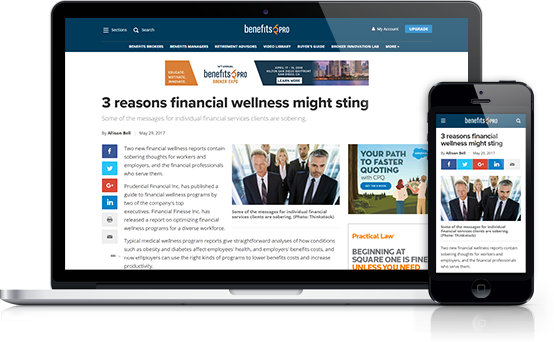
Faced with the steepest increase in employer health care costs since 2012, your clients likely feel powerless to challenge the system. But in fact, by saying no to the status quo, they have the opportunity to become true change agents. And as an advisor, you can help them understand the simple yet bold choices they can make to control costs and profoundly impact their employees' lives – and wallets.
Harnessing that power starts with addressing the roots of rising costs to reward systems that get it right. Centivo's recently released report, "Power to the Employers: Unlocking Healthcare Affordability," digs into why current approaches are missing the mark for both employers and employees as well as simple yet potent strategies to unleash sustainable value. Here are some highlights from the report.
|What's allowed will continue
Nothing will change when employers are presented with only minor variations of the same costly plan options. And even as cost-effective value-based care models make inroads, it can be difficult to compete with traditional fee-for-service models. Without a call from employers for alternatives and a migration to these modernized models, traditional health insurers will continue bringing in billions in profits with no incentive to change what's working (for them).
|The real costs of cost-shifting
However you slice it, reactive strategies for handling ever-rising health care expenses erode wages and hinder business growth. Whether employers shift costs to employees or take the hit themselves, the upshot is lower wages, fewer salary increases and less to invest in company development opportunities. For employees, that's cash that could have paid for gas, rent and years of college tuition.
|Higher costs don't equate to better care
Health care prices keep rising, but generally have no bearing on the quality of the care, patient experience or outcomes. What's more, costs can vary wildly for the same exact service at different hospitals – or even within the same facility. So if higher costs don't equate to better care, it's also true that less expensive facilities or procedures can provide excellent care and outcomes. But if carriers aren't incentivized to negotiate the best rates for value-based providers, companies are left to front the bill.
|Harnessing the power to change the system
Health care coverage can evolve for the better when your clients recognize their power to create and reward systems that are getting it right. Here are some guideposts to get them started:
|- Sharpen the focus on primary care. Primary care-centered health plans nurture that critical relationship and set a foundation for better outcomes and lower costs. Increased primary care usage means conditions are less likely to go undiagnosed, resulting in a lower need for expensive, invasive interventions. In turn, patients experience lower rates of emergency department visits as well as avoidable hospitalizations and specialist services, saving them – and their employers – thousands of dollars annually.
- Prioritize quality. Curated provider models can provide more access to quality care, ensuring high standards are met while resulting in organic, long-term savings. By partnering only with high-quality providers that are equally committed to charging fair prices, employees get access to great care at warranted costs.
- Break down barriers to care. Despite the ever-rising cost of their insurance, many employees find using their coverage flatly unaffordable. Changing the system requires a renewed emphasis on the purpose of coverage: to keep people at their healthiest. That means ensuring people can actually go to the doctor by removing the barriers to care like price uncertainty, excruciatingly high deductibles and confusing "extras" like coinsurance and by putting care prevention and coordination at the forefront.
- Demand real transparency. Understanding price variations is instrumental in addressing affordability challenges. But price transparency isn't the whole story. Data transparency is another critical factor in the drive toward affordability, since understanding claims data (like your clients can get with self-funded plans) empowers employers to analyze patterns and plan utilization and adjust strategies where needed.
- Get picky about PBMs. While many PBMs are wringing massive profits from the system, transparent PBMs are on the rise. You can help clients partner with those who demonstrate quality service at a fair and reasonable price.
Related: The future is now: How is technology impacting the benefits industry?
Complete your profile to continue reading and get FREE access to BenefitsPRO, part of your ALM digital membership.
Your access to unlimited BenefitsPRO content isn’t changing.
Once you are an ALM digital member, you’ll receive:
- Breaking benefits news and analysis, on-site and via our newsletters and custom alerts
- Educational webcasts, white papers, and ebooks from industry thought leaders
- Critical converage of the property casualty insurance and financial advisory markets on our other ALM sites, PropertyCasualty360 and ThinkAdvisor
Already have an account? Sign In Now
© 2025 ALM Global, LLC, All Rights Reserved. Request academic re-use from www.copyright.com. All other uses, submit a request to [email protected]. For more information visit Asset & Logo Licensing.








